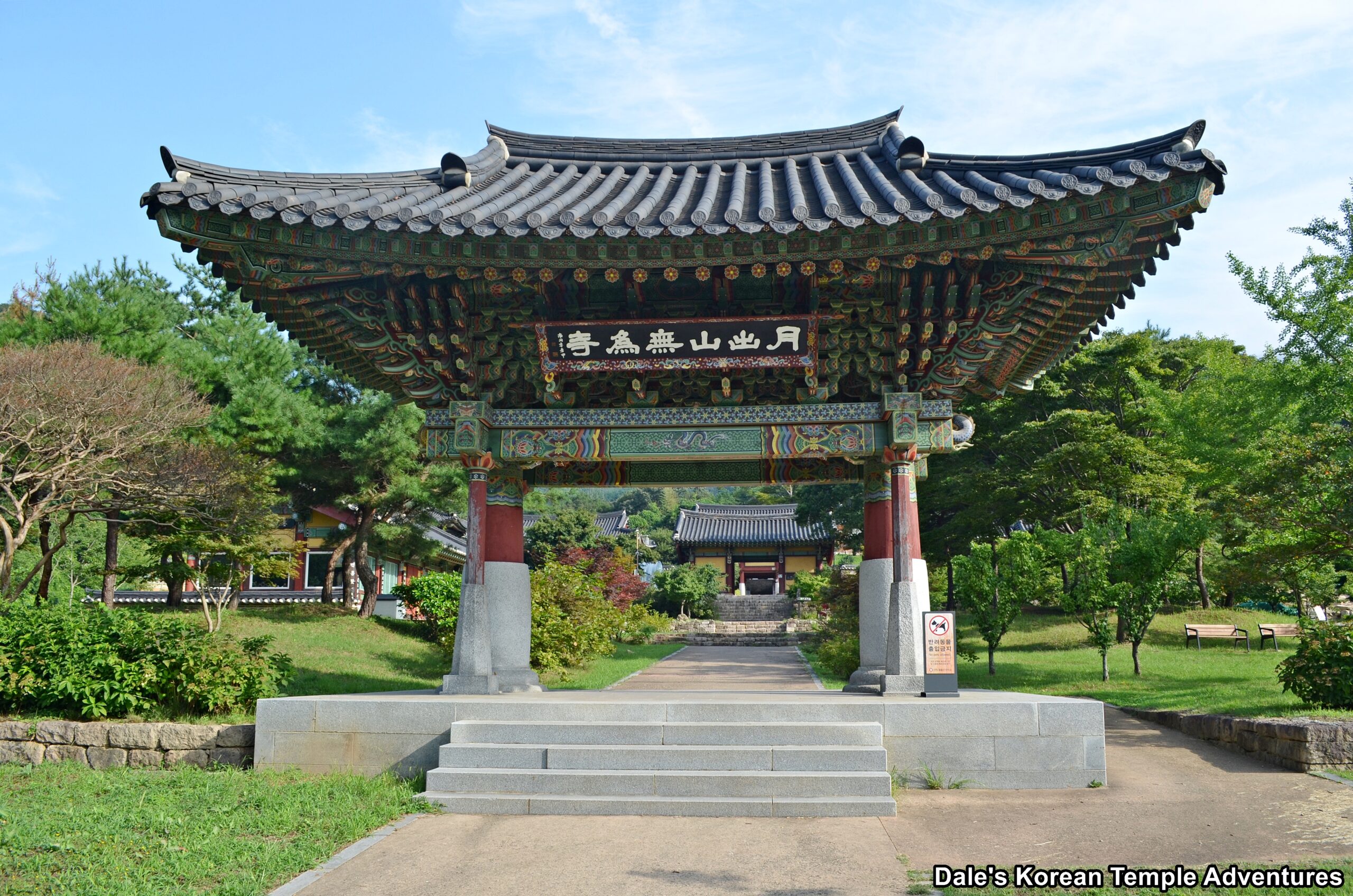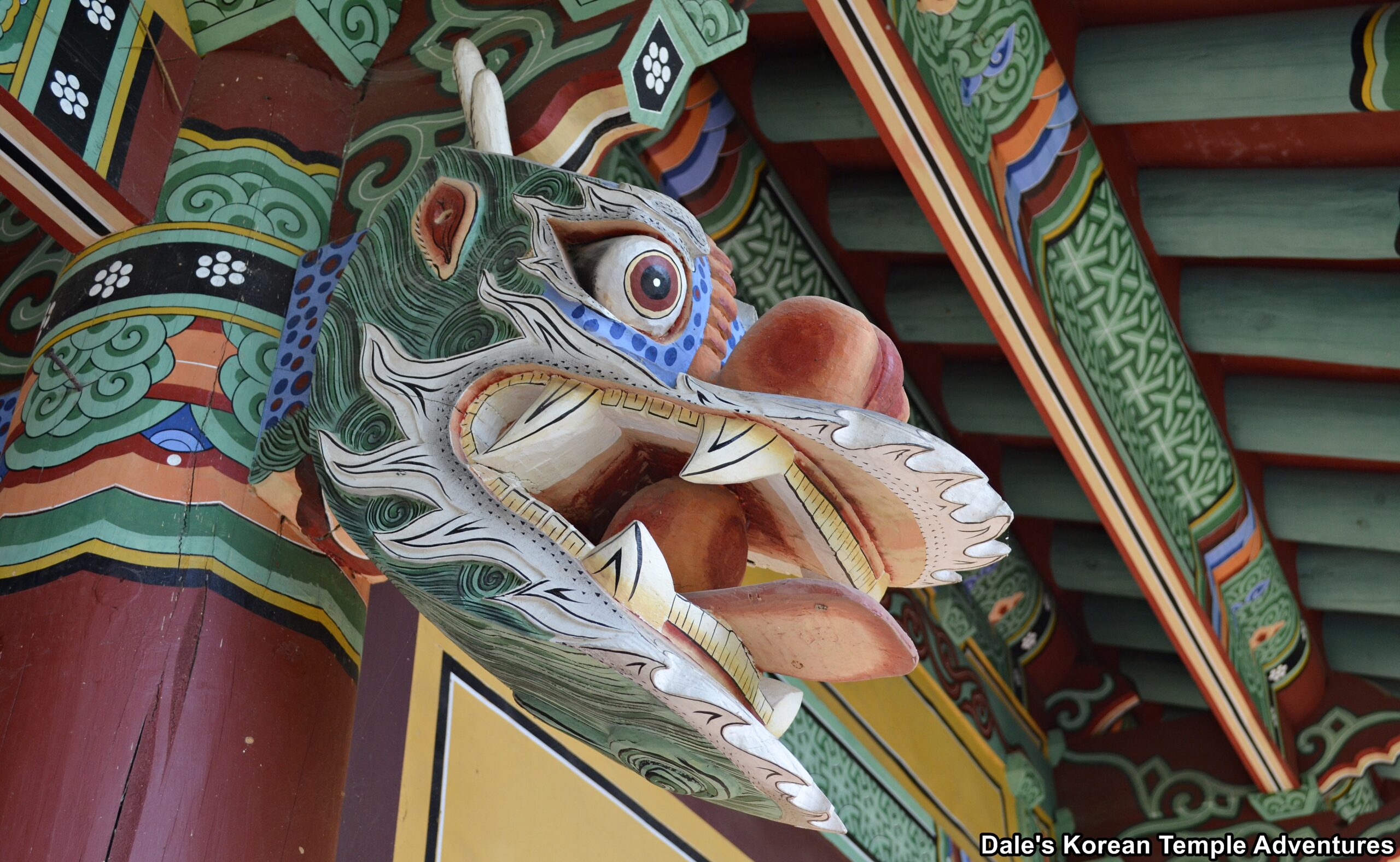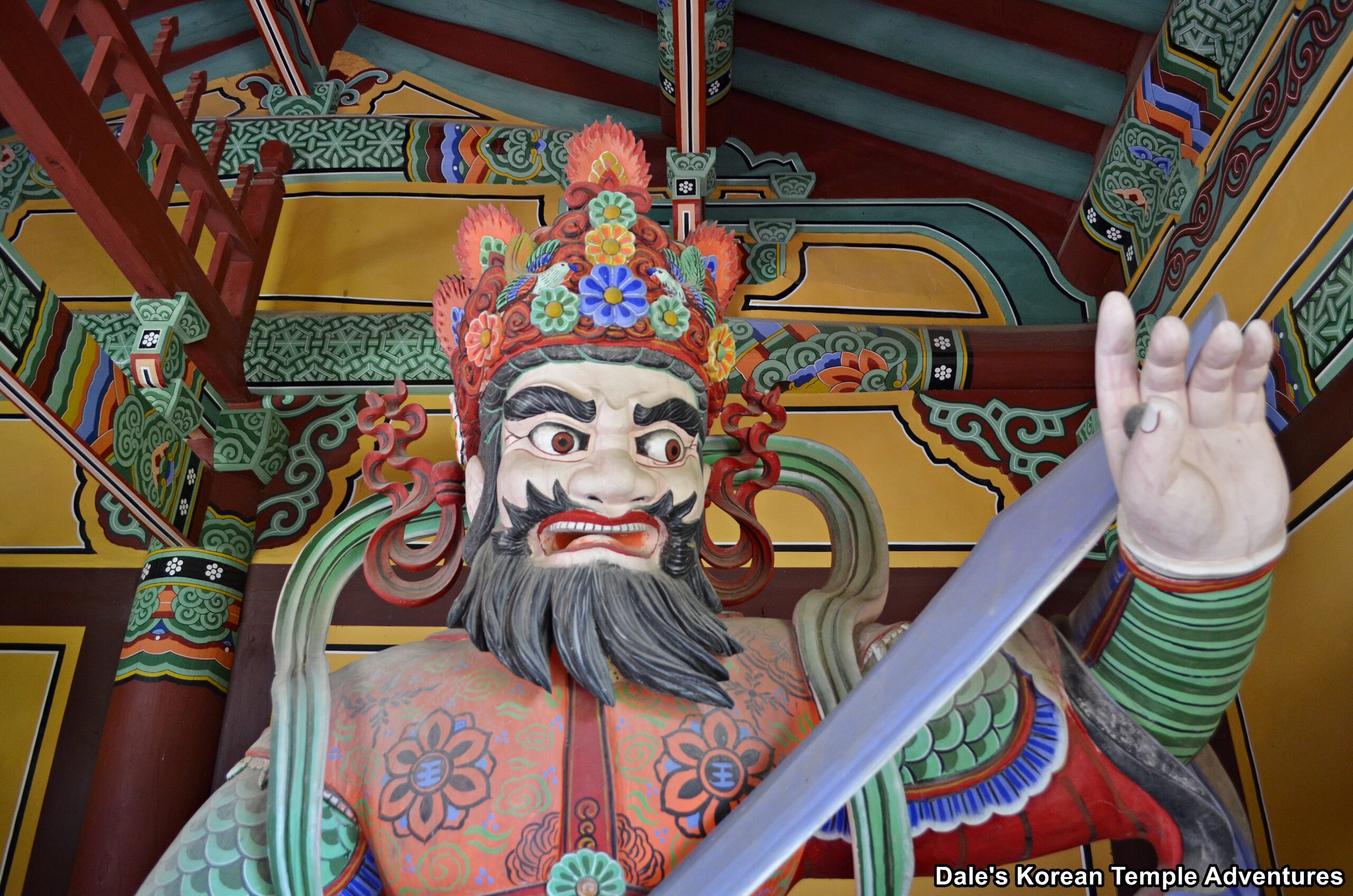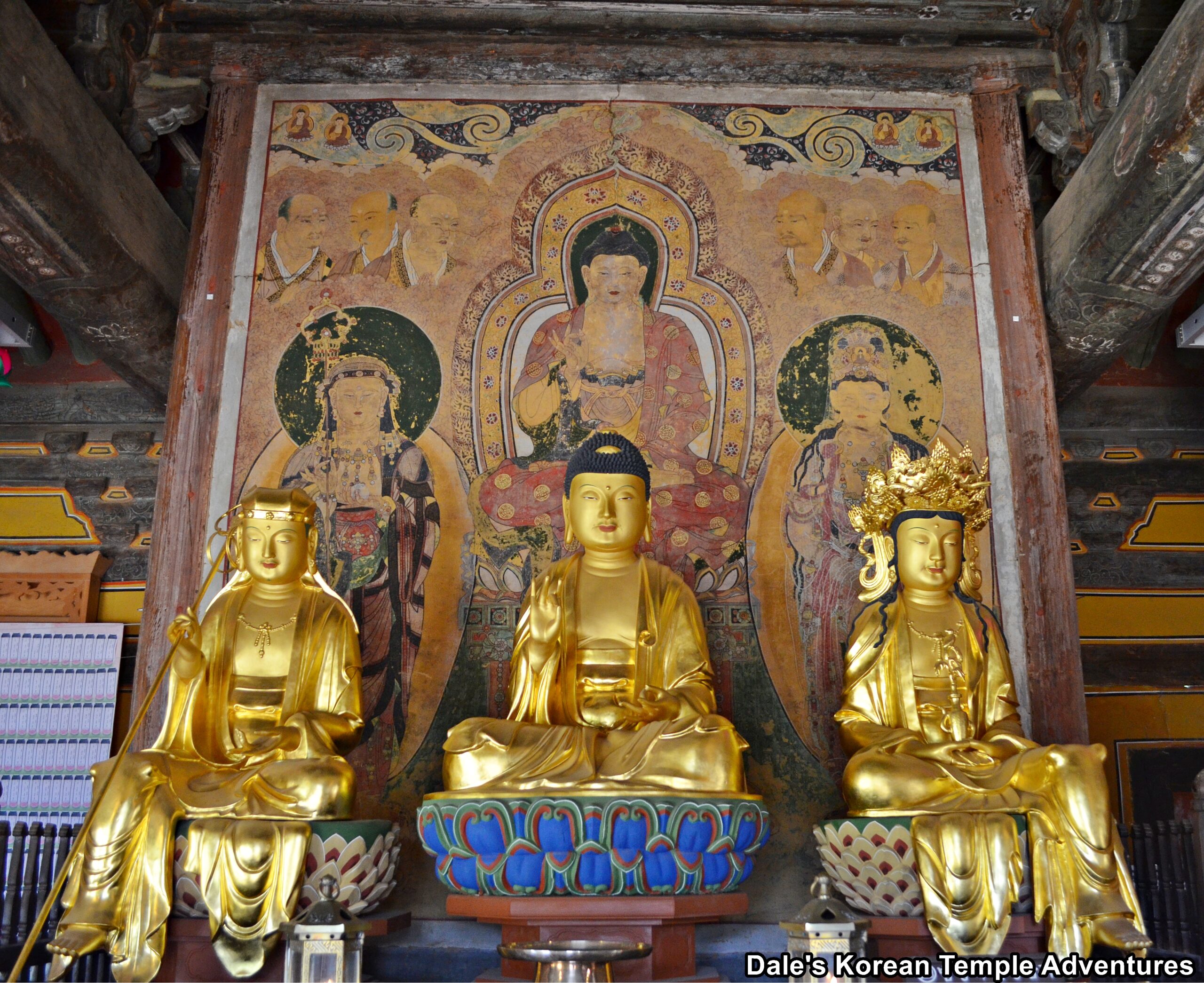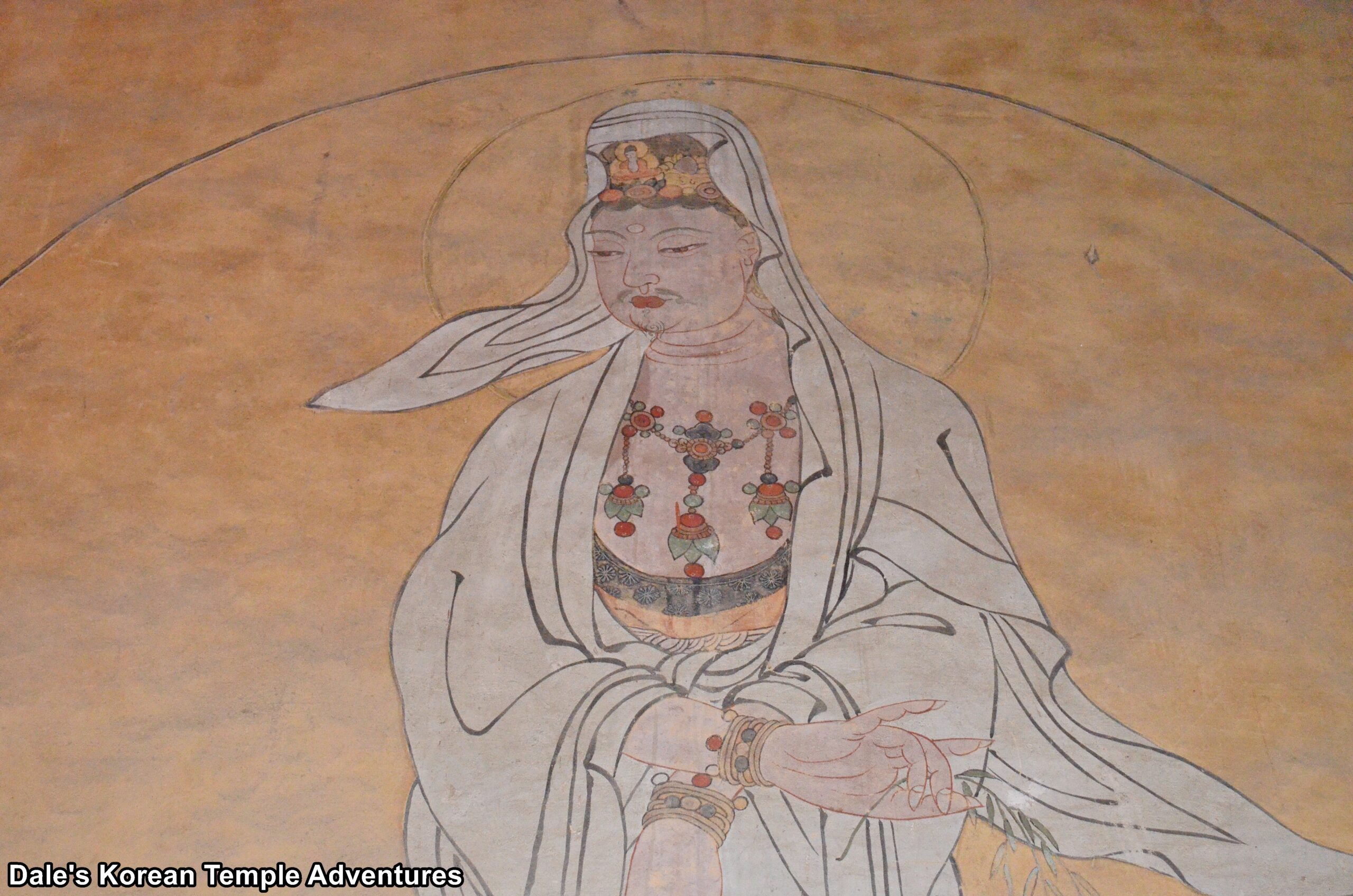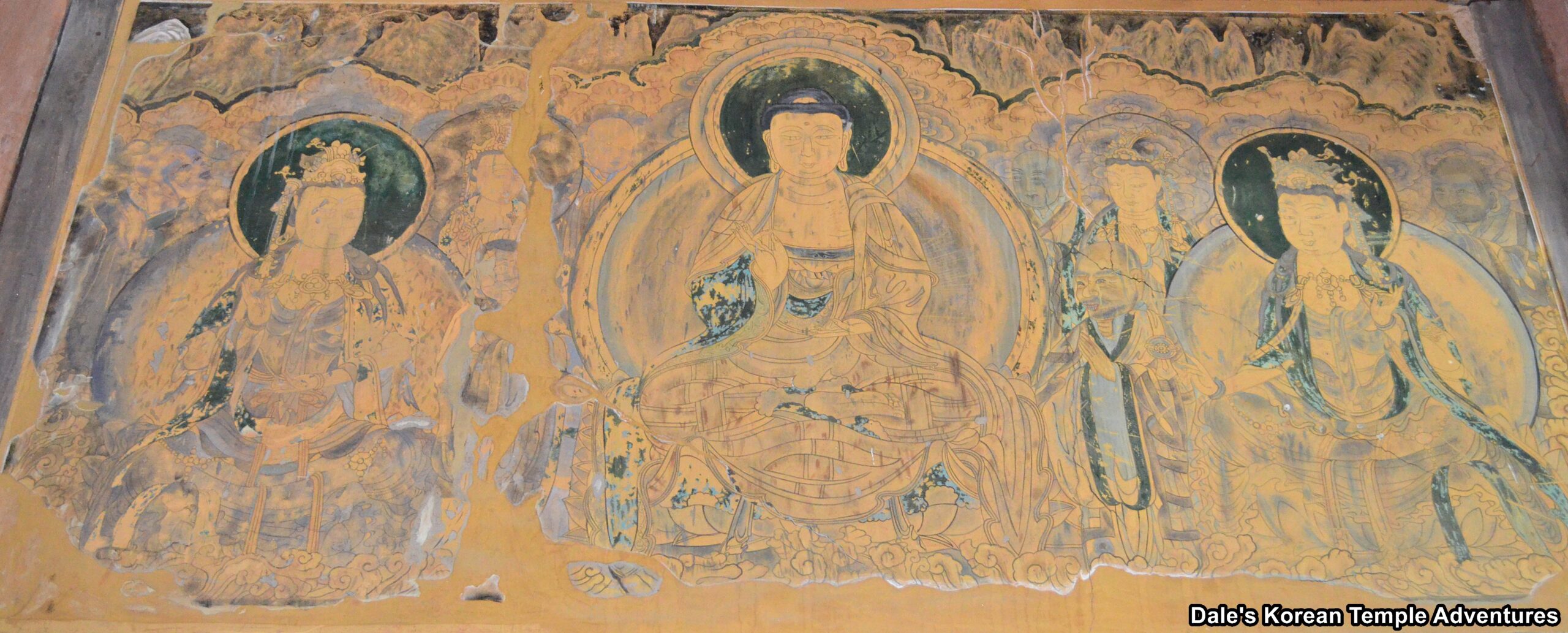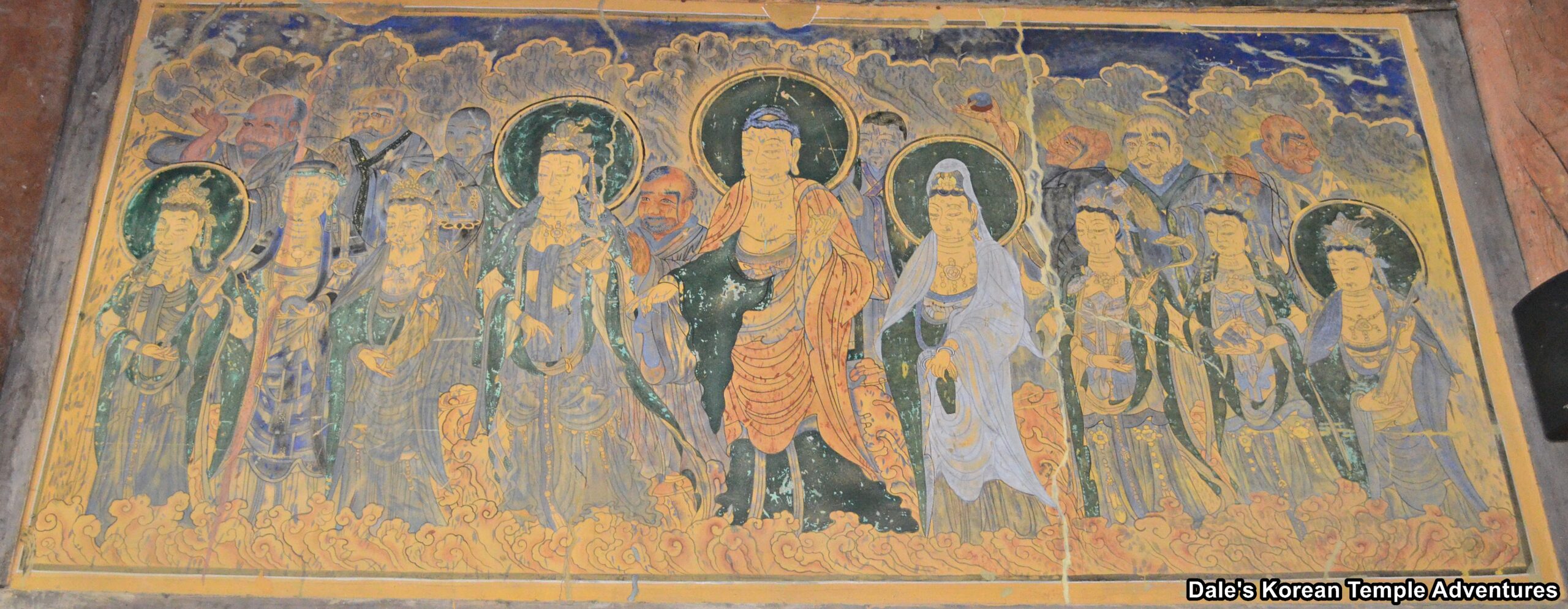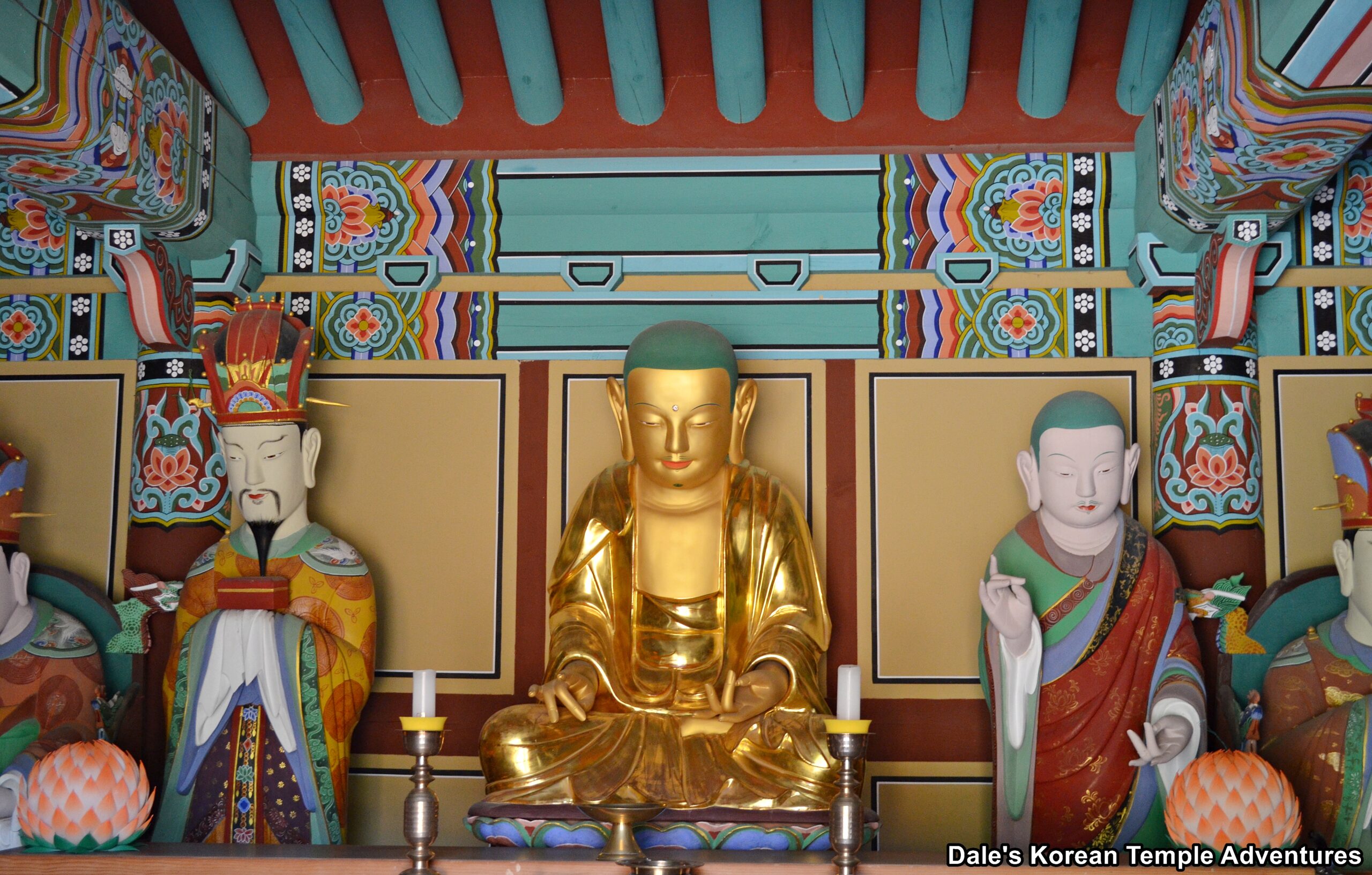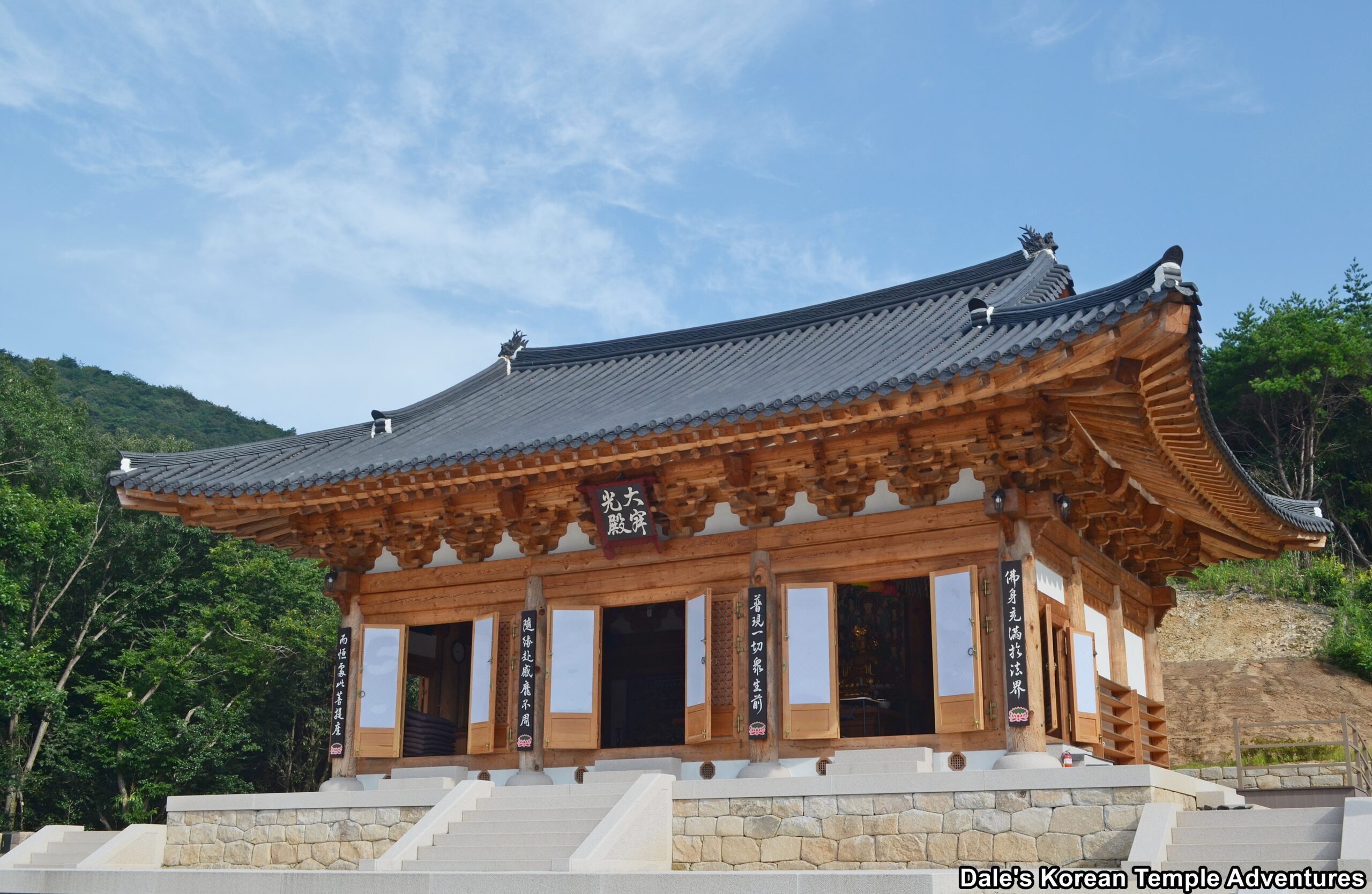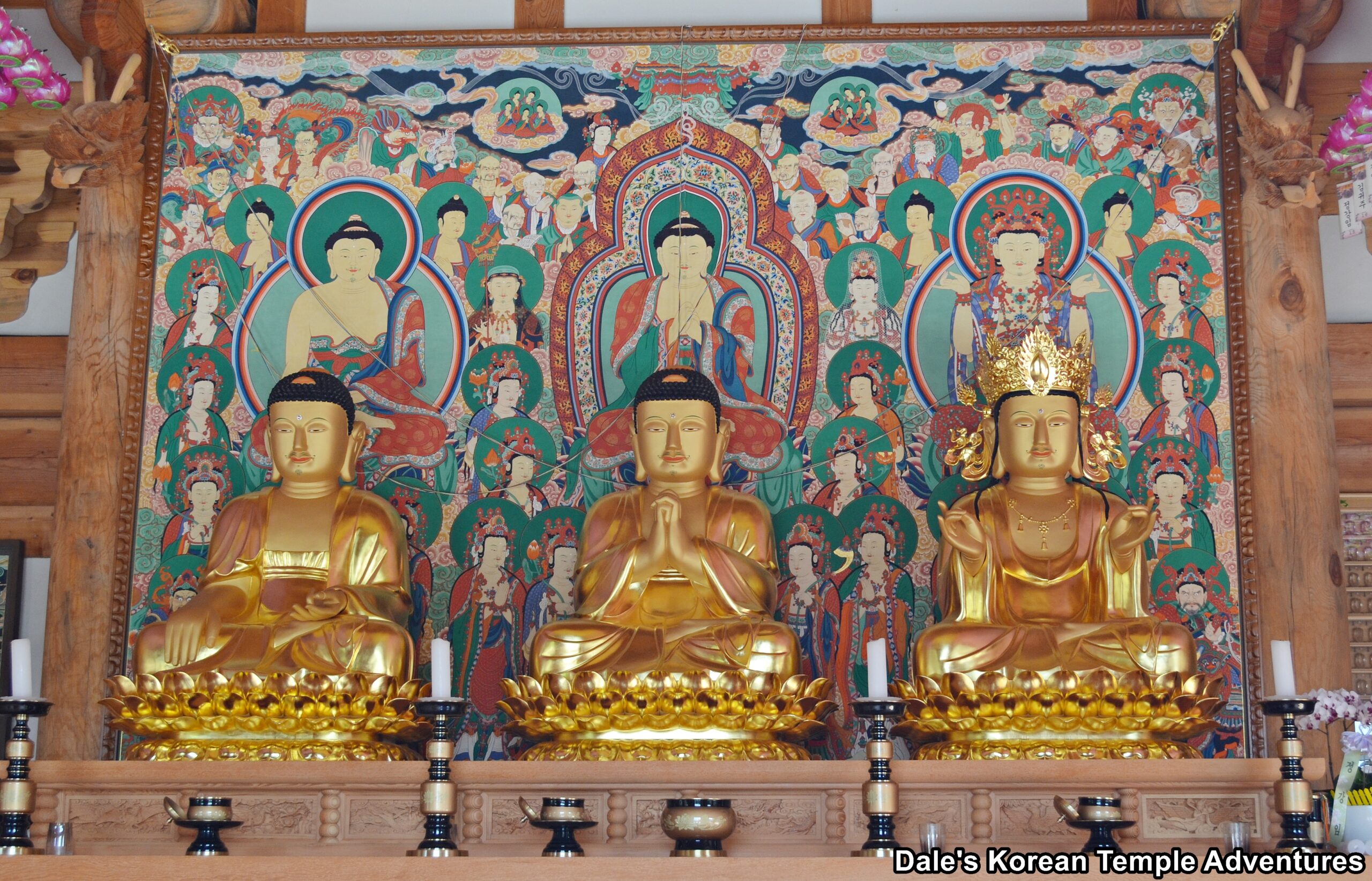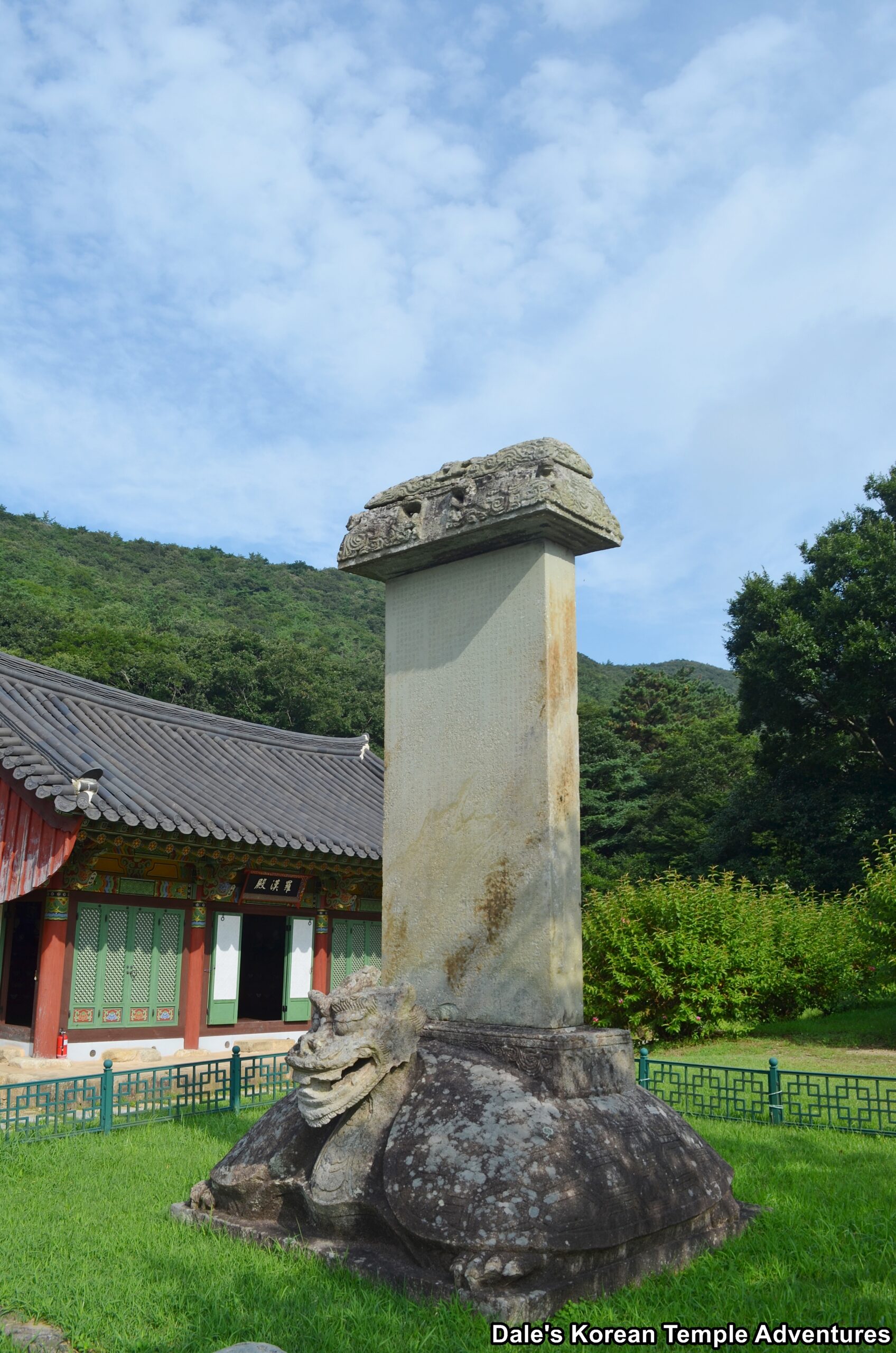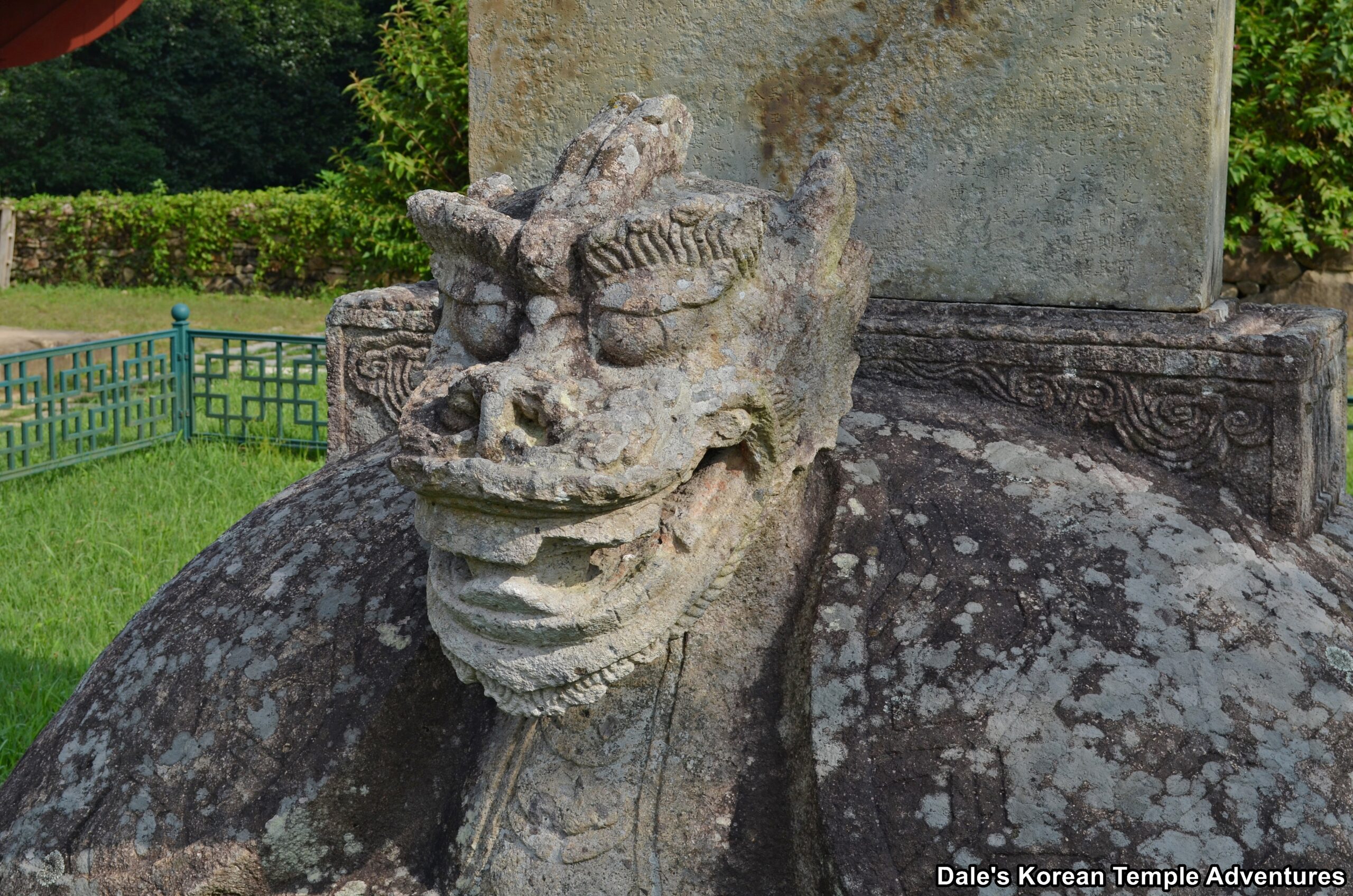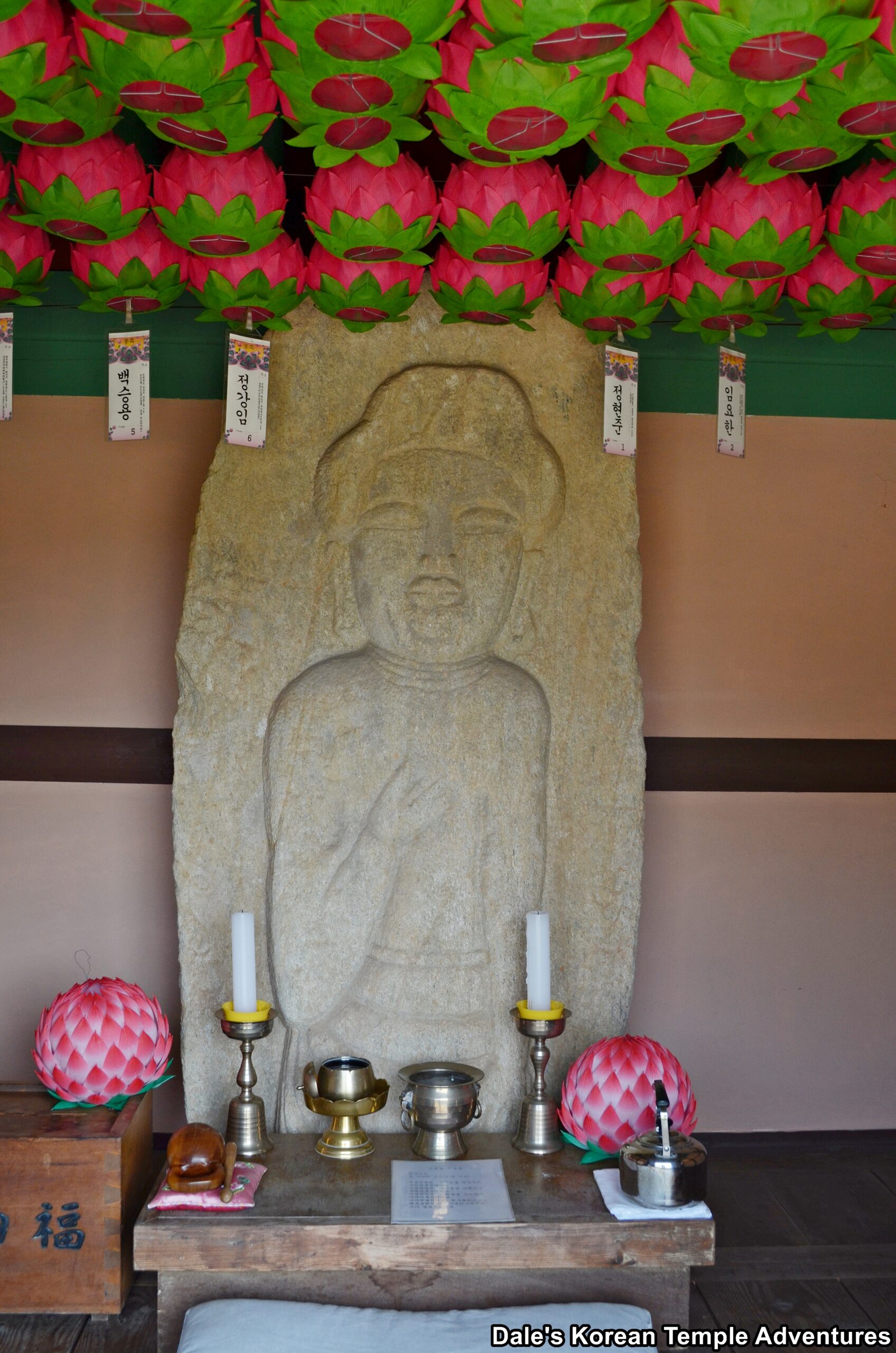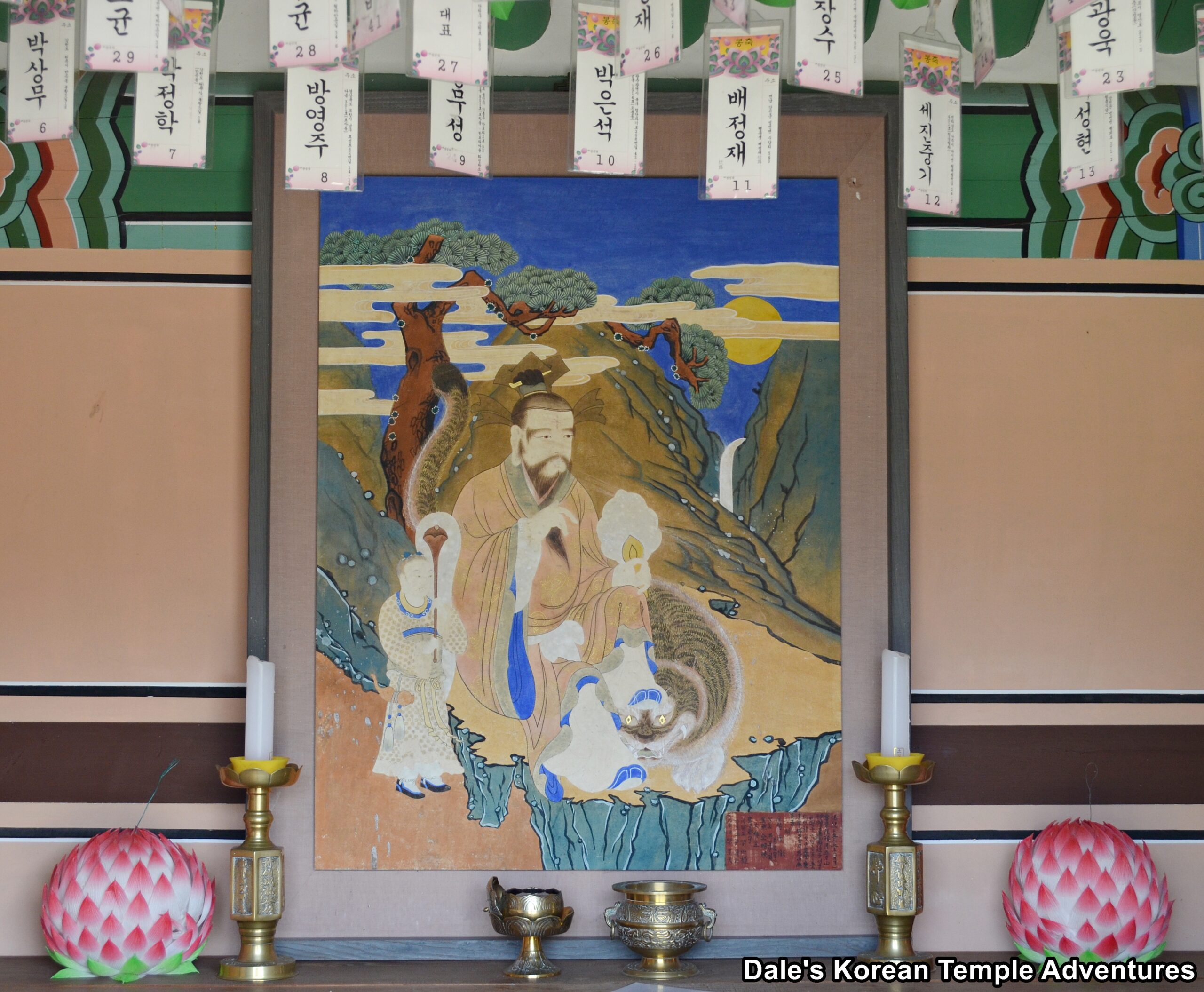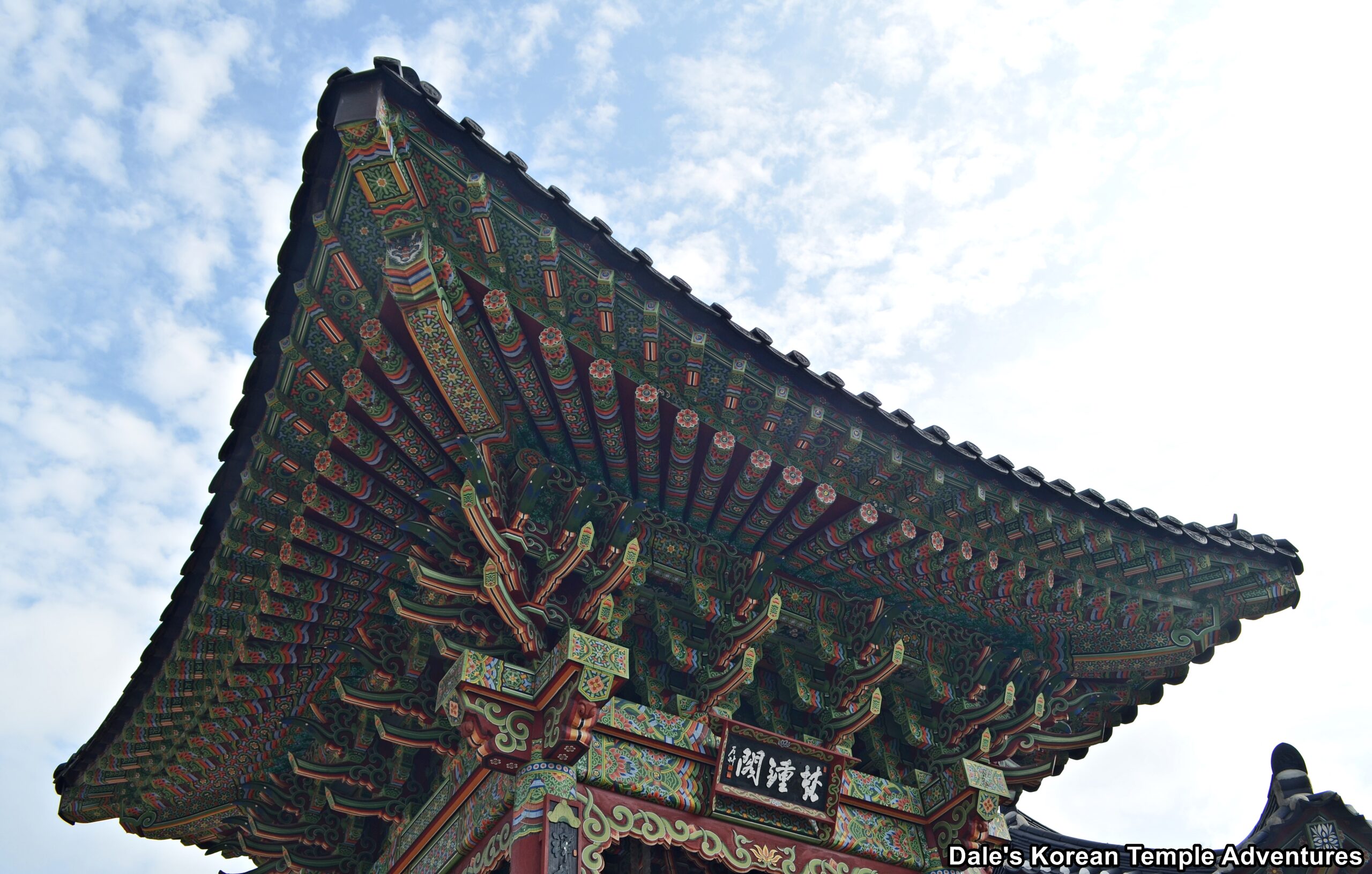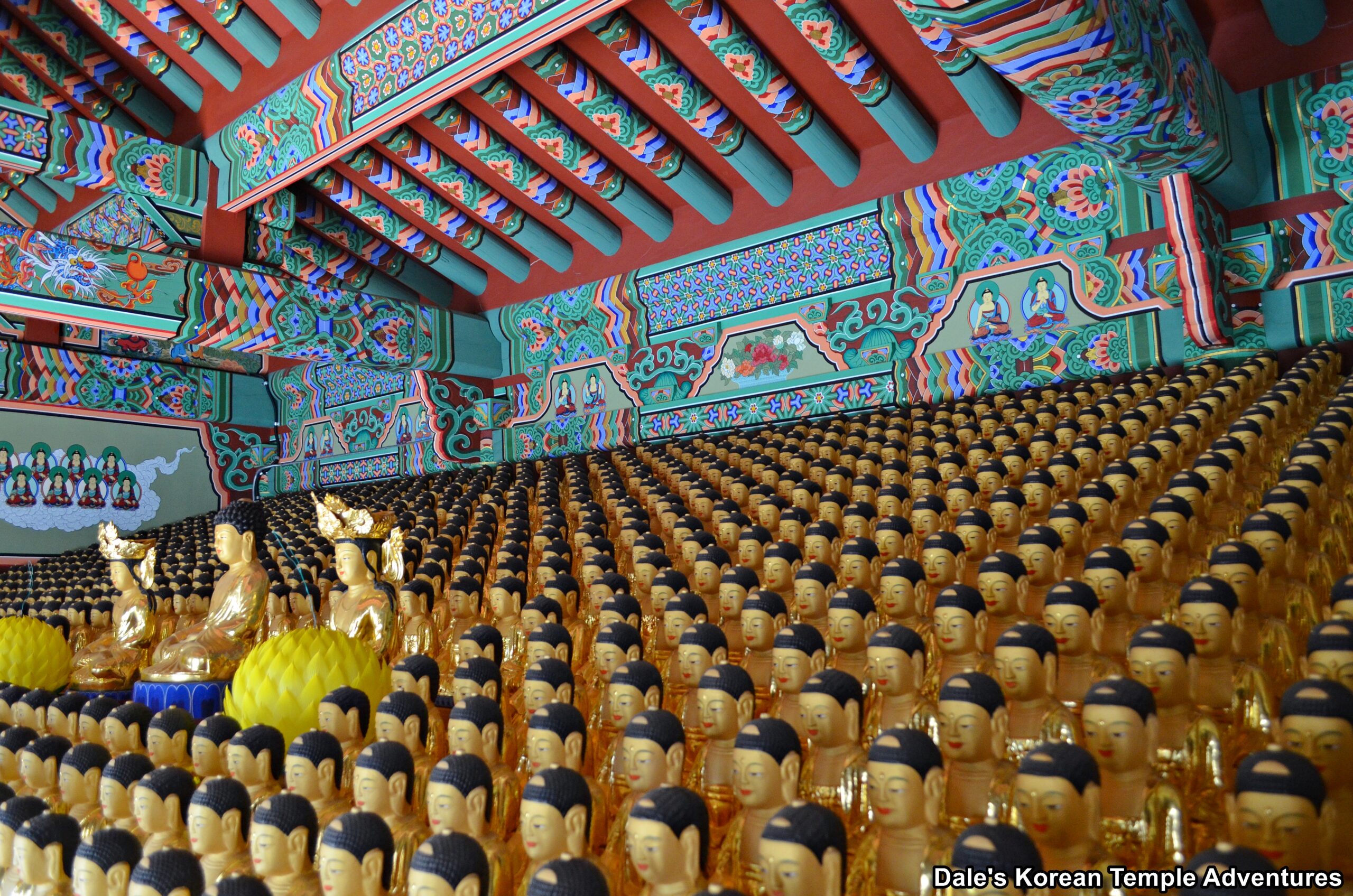Muwisa Temple – 무위사 (Gangjin, Jeollanam-do)
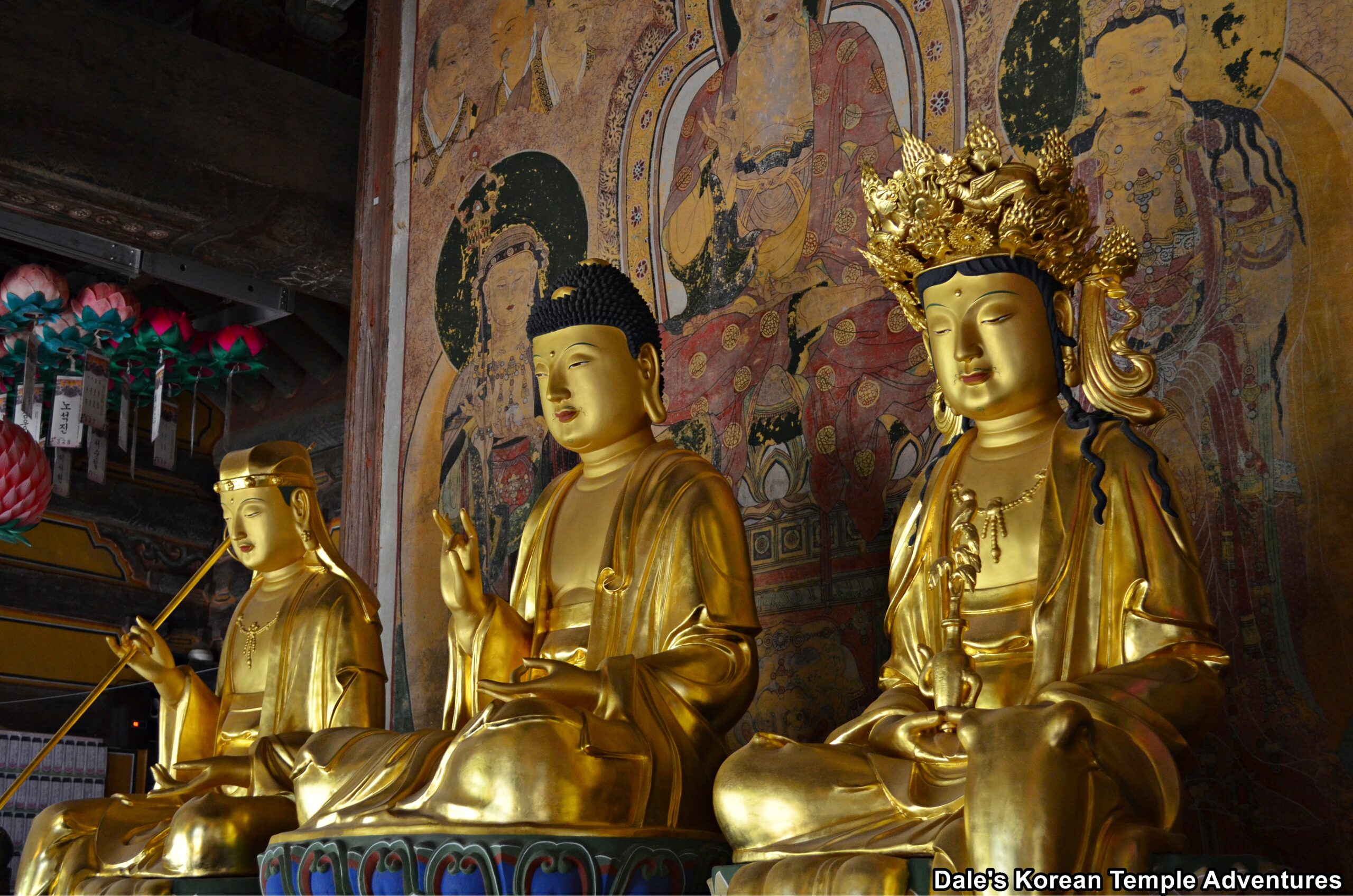
Temple History
Muwisa Temple is located in the southern portion of the picturesque Wolchulsan National Park in Gangjin, Jeollanam-do. According to both the Cultural Hermitage Administration website and the Muwisa Sajeok (The History of Muwisa Temple), the temple was first built in 617 A.D. by the famed monk Wonhyo-daesa (617-686 A.D.) and named Gwaneumsa Temple (The Bodhisattva of Compassion Temple). But this is hard to believe for a couple of reasons. First, Wonhyo-daesa would have been just a one year old when he first built Muwisa Temple. And as accomplished as he was as a Buddhist monk, this stretches the limits of credulity. Additionally, Wonhyo-daesa was a Silla monk. The Silla Kingdom (57 B.C. – 935 A.D.) was in open hostilities, and eventual war, with the Baekje Kingdom (18 B.C. – 660 A.D.), which is where Muwisa Temple was located.
What is perhaps more plausible, but still questioned by some, is that Muwisa Temple was first established by Doseon-guksa (826-898 A.D.) in 875 A.D. At this time, the temple was called Galoksa Temple. Whatever the case may be, Muwisa Temple was definitely established by the early 10th century by Seongak-daesa (864-917). Muwisa grew into a major Seon Buddhist temple in the early part of the Goryeo Dynasty (918-1392).
Before the 10th century, the name of the temple changed once more, this time, to Muwigapsa Temple, and it became a Seon temple. Later on, the temple would become a Cheontae temple with the growing popularity of the Cheontae teachings in the 11th century. According to the Muwisa Sajeok (The History of Muwisa Temple), Muwisa Temple fell into disrepair and was rebuilt and renamed Suryuksa Temple, which literally means “Water Land Temple” in English. The reason for this change of name is that historians believe that the temple became a site for a ceremony for the rites of the dead known as the “Suryuk-je – 수륙재” in Korean. This is a Buddhist ritual to help console the spirits of the dead. Specifically, it was a ritual for the war dead, both friendly and foe, that couldn’t reincarnate. This helps to explain why the main hall, the Geukrakbo-jeon Hall, at Muwisa Temple is dedicated to Amita-bul (The Buddha of the Western Paradise). The present Geukrakbo-jeon Hall was built in 1430 A.D.
In 1550, during the mid-Joseon Dynasty (1392-1910), the temple was rebuilt and renamed Muwisa Temple by the monk Taegam. Tragically, Muwisa Temple was destroyed, in part, by fire during the Imjin War (1592-1598). Fortunately, the Geukrakbo-jeon Hall was spared.
In 1934, the Geukrakbo-jeon Hall became National Treasure #13 during Japanese Colonial Rule (1910-1945). And in 1974, after years of only having a handful of temple buildings, new construction took place at Muwisa Temple. In total, Muwisa Temple is home to two National Treasures and an additional four Korean Treasures.
Temple Layout
You first make your way up to Muwisa Temple through the broad Iljumun Gate. The next entry gate you’ll come across is the temple’s Cheonwangmun Gate. Of note, and up in the eaves of this entry gate, near the entryway of the Cheonwangmun Gate, are the wisdom pearl holding collection of wooden dragons. As for the interior, and taking up residence inside the Cheonwangmun Gate, are four stout statues dedicated to the Four Heavenly Kings. Having passed under the boxy Nu-gak Pavilion, you’ll finally gain entry to the main temple courtyard at Muwisa Temple.
Straight ahead of you stands the aforementioned Geukrakbo-jeon Hall that dates back to 1430 and is National Treasure #13. The exterior is plainly adorned reminiscent of the Muryangsu-jeon Hall at Buseoksa Temple and the Daeung-jeon Hall at Sudeoksa Temple. The moment you step inside the Geukrakbo-jeon Hall at Muwisa Temple your eyes will be drawn to the main altar. The seated triad that sits upon the main altar date back to the mid to late 15th century during the reign of King Seongjong of Joseon (r. 1469-1494). The triad consists of a set centred by Amita-bul (The Buddha of the Western Paradise), which is made from clay. Amita-bul is then joined to its right by Jijang-bosal (The Bodhisattva of the Afterlife) and to the left by Gwanseeum-bosal (The Bodhisattva of Compassion), who are both made from wood. The triad is Korean Treasure #1312. Backing this triad is the Mural Painting in Geukrak-jeon Hall of Muwisa Temple, which is National Treasure #313. This long main altar mural is believed to have been painted by the monk Haeryeon in 1476. While simplistic in design, which follows the characteristics of the early Joseon Dynasty, it contains the gentle colours of the Goryeo Dynasty (918-1392). The central image in the main altar mural depicts the central image of Amita-bul. This image is then flanked on either side, much like the main altar statues, by Gwanseeum-bosal and Jijang-bosal. Clouds are floating in the background, and the main triad is joined by three accompanying Nahan (The Historical Disciples of the Buddha). In total, the mural is meant to depict the Western Paradise of Amita-bul. Overall, the dominant colours in the large mural are reds and greens.
On the reverse side of the main altar wall is the Buddhist Painting in the Geukrak-jeon Hall of Muwisa Temple (Avalokitesvara in White Robe). Like the main altar mural, this mural dedicated to Gwanseeum-bosal was first painted in 1476. The mural is Korean Treasure #1314. In this tall mural, you’ll see a standing image of Gwanseeum-bosal (The Bodhisattva of Compassion) in a white robe atop a lotus leaf. Together, they are floating on the turbulent waves. In her right hand, Gwanseeum-bosal holds a willow sprig; while in her left, she holds a Kundika (water bottle). There is a sense of tranquility to Gwanseeum-bosal, even though she is standing in the middle of a stormy sea. Behind Gwanseeum-bosal is a circular red sun. And in the bottom left corner of the mural you’ll see a seated image of a monk with hands drawn together in supplication. Interestingly, there’s a bird that sits on the shoulder of the monk. This bird also respectfully turns its head towards Gwanseeum-bosal.
Rounding out the historic collection, there used to be a total of thirty-one paintings that adorned the interior of the Geukrakbo-jeon Hall. Twenty-nine of these murals now take up residence inside Muwisa Temple’s museum. All of these murals are considered Korean Treasure #1315. The two paintings that remain are meant to symbolize Amita-bul’s Welcoming Descent and the Sermon of Seokgamoni-bul. The Sermon of Seokgamoni-bul hangs on the left wall above a modern painting dedicated to Chilseong (The Seven Stars). The central image in the Sermon of Seokgamoni-bul (The Historical Buddha) is joined on either side by eight Bodhisattvas. And in turn, the Buddha and Bodhisattvas are joined by a collection of Nahan (The Historical Disciples of the Buddha). To the right of the main altar, on the other hand, is the Amita-bul’s Welcoming Descent. This one hangs above a modern Shinjung Taenghwa (Guardian Mural). Like the other murals that adorn the front and back of the main altar inside the Geukrakbo-jeon Hall, these thirty-one murals date back to the mid-Joseon Dynasty.
Directly behind the historic Geukrakbo-jeon Hall is the newly built Daejeokgwang-jeon Hall. For now, the exterior of the hall is unadorned and similar in colour to the Geukrakbo-jeon Hall. Stepping inside the large Daejeokgwang-jeon Hall, you’ll find a triad centred by Birojana-bul (The Buddha of Cosmic Energy). This central image is joined on either side by Seokgamoni-bul (The Historical Buddha) and Nosana-bul (The Perfect Body Buddha). To the left of this main altar is a beautiful, new Gamno-do (Sweet Dew Mural). It looks at though the interior will eventually be painted; but for now, it’s remains without its traditional dancheong colours.
To the immediate right of the Geukrakbo-jeon Hall is Muwisa Temple’s Myeongbu-jeon Hall. Just as you step inside this temple shrine hall, you’ll rather surprisingly be greeted by two eye-popping wooden Geumgang-yeoksa (Vajra Warrior) statues. Resting on the main altar inside the Myeongbu-jeon Hall is a green haired statue of Jijang-bosal (The Bodhisattva of the Afterlife). This central statue is then joined by ten wooden seated statues dedicated to the Siwang (The Ten Kings of the Underworld).
To the front left of the Geukrakbo-jeon Hall, and down, you’ll find a three-story stone pagoda that’s believed to date back to the early Goryeo Dynasty (918-1392). In fact, it’s believed to date back to around 946 A.D., the same time as the Stele for Buddhist Monk Seongak at Muwisa Temple, which also occupies the main temple courtyard out in front of the Geukrakbo-jeon Hall. The Stele for Buddhist Monk Seongak at Muwisa Temple was erected in 946 A.D., a full twenty-eight years after the passing of Seongak-daesa. The stele is Korean Treasure #507. As for its design, it has a turtle-shaped base with a dragon face. And the capstone has lotus flowers and dragons meant to lead the dead to the Western Paradise.
To the left and left rear of the Geukrakbo-jeon Hall, you’ll find four additional temple shrine halls. The first is a compact Mireuk-jeon Hall. Housed inside this shrine hall is a stone relief of Mireuk-bul (The Future Buddha) inside. To the left of the Mireuk-jeon Hall is the Sanshin-gak Hall. Housed inside this shaman shrine is a modern painting dedicated to Sanshin (The Mountain Spirit). In Sanshin’s left hand, he holds a feather fan, while his right hand is gently pulling at his long, black beard. And all the while, a golden, diamond-eyed tiger kneels to the left of Sanhin, as though it’s ready to pounce.
The largest of the three shrine halls in this area is the Nahan-jeon Hall. Inside this shrine hall are housed diminutive statues dedicated to the Nahan. And an equally small sized statue of Seokgmaoni-bul sits in the centre of the main altar. The final shrine hall at Muwisa Temple that visitors can explore lies across a simple bridge between the Nahan-jeon Hall and the Sanshin-gak Hall. This is the Cheonbul-jeon Hall. There are a thousand bronze coloured statues that populate this temple shrine hall.
How To Get There
To get to Muwisa Temple, you’ll first need to get to the Gangjin Intercity Bus Terminal. From this bus terminal, you’ll need to catch a bus that directly goes to Muwisa Temple. These buses leave six times a day starting at 6:40 a.m.
Overall Rating: 9/10
It should come as no surprise that the main highlight, and what most visitors come to see, is the Geukrakbo-jeon Hall. With its historic and beautiful murals and statues that occupy this equally ancient main hall, take your time and enjoy the celebrated Geukrakbo-jeon Hall. In addition to the main hall, there are a handful of newer shrine halls at Muwisa Temple that deserve your time, as does the temple museum (if you have the time), and the ancient stele dedicated to Seongak-daesa in the main temple courtyard.
